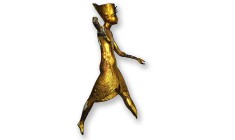Private Art Businesses and Organized Crime
Yates, D. and Rausch, C. (2022) ‘Private art businesses and organized crime’, in The Private Sector and Organized Crime. London: Routledge, pp. 210–223.
The global art market is valued in the tens of billions of dollars, and tens of millions of art-sale-related transactions take place annually. The volume of high-value transactions coupled with a tradition of opaque business practices and comparative lack of regulatory oversight make this market attractive to organized criminal groups (OCGs) engaged in activities such as trafficking and money laundering. Traditional strategies for combating organized crime within private sectors, such as adopting transparent sales practices, submitting to external monitoring, or engaging in aggressive in-house anti-money laundering measures, challenge the centuries-old idiosyncratic businesses practices of the art market that tend to conflate privacy with secrecy. Art businesses’ self-regulation efforts have been largely unsuccessful. This chapter describes how the structure of the art market allows for the presence of organized crime, particularly the monetary proceeds of organized crime, either to be tolerated, facilitated, or go undetected. By focusing on how private art businesses manage, or fail to manage, risk related to the possibility of transacting with OCGs, this chapter also discusses how combating the presence and influence of forms of organized crime poses a dilemma for private art businesses.
Available on publisher’s website: https://www.taylorfrancis.com/chapters/edit/10.4324/9781003198635-15/private-art-businesses-organized-crime-donna-yates-christoph-rausch
